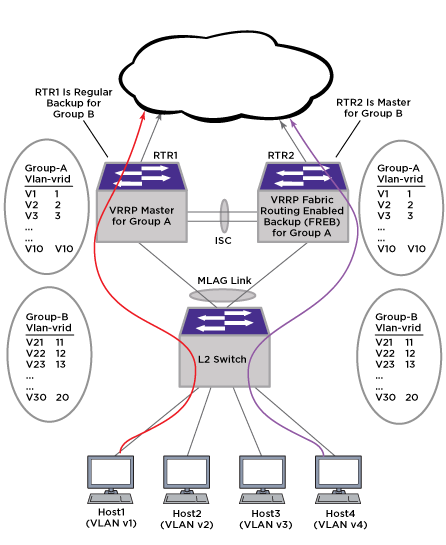VRRP Grouping Description

Example VRRP Group Configuration shows an example configuration of two different groups in simple This command is available on all Universal switches supported in this document. topology. Group A is configured with 10 VRRP VRs, each VR on a separate VLAN, and using separate VRID. The same set of VRRP VLANs are grouped together on both routers. All the VRRP VLANs on Group A have the same topology with respect to Router 1 and Router 2. If a VLAN on Router 1 goes down due to link faults or I/O slot failure, other VLANs also go down (that is, all VLANs in the group share the same fate).
This is a typical topology for which this scaling is well suited. If the VLAN going down event triggers VRRP state change in one VLAN, a VRRP state change occurs on other VLANs also. This example has four hosts on different VLANs belonging to group A; traffic from hosts may get hashed to either of the MLAG links and reach either the VRRP master (RTR1) or the Fabric Routing-enabled backup router (RTR2). Both routers perform routing for host traffic. Group B has a different set of 10 VRRP VRs that were configured on a different set of VLANs and with a different set of VRIDs from that of Group A. Routers are configured for regular master-backup states (unlike Group A which has master-FREB states).

Note
If you want a regular master-backup operation on a particular group for some reason, do not reuse the VRIDs configured in other groups or other individual VRs.
